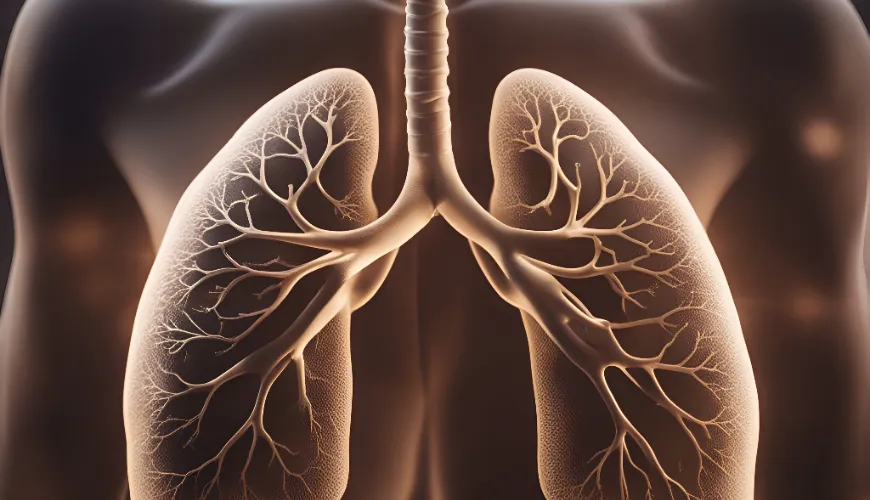
How Do Lung Chlamydiae Threaten Our Health and How to Treat Them

Are Pulmonary Chlamydia Contagious? A Detailed Look at the Hidden Danger
Pulmonary chlamydia, specifically the bacterium Chlamydia pneumoniae, is one of the lesser-known but very insidious causes of respiratory diseases. These bacteria can cause various respiratory tract infections, which can lead to serious health problems. Understanding how pulmonary chlamydia spreads, who is most at risk, and how to protect against them is crucial for ensuring health and preventing complications. The answer to the question "are pulmonary chlamydia contagious?" is unequivocal, but it has much deeper implications than it might seem at first glance.
How Pulmonary Chlamydia Spreads
Chlamydia pneumoniae spreads from person to person through droplet infection. This means that bacteria are released into the air when an infected person coughs, sneezes, or even talks. These tiny droplets containing bacteria can be inhaled by others, leading to their infection. It is important to realize that these bacteria are extremely resilient and can survive even in unfavorable conditions, increasing the risk of their spread.
Pulmonary chlamydia most commonly spreads in environments with a high concentration of people. Typical places where the infection can spread quickly are schools, workplaces, public transport, and even households where someone is infected. This makes them a highly contagious pathogen that can threaten a wide range of the population. Their spread is so easy that it may seem almost inevitable, especially in the colder months of the year when people spend more time indoors.
Try our natural products
Symptoms of Infection
Symptoms of pulmonary chlamydia infection can be very diverse, often leading to them being confused with other respiratory illnesses such as the common cold or flu. The most common symptoms include a persistent dry cough, chest pain, fatigue, sore throat, mild fever, and shortness of breath. These symptoms can be mild and progress slowly, causing many people not to seek medical help in time.
However, the infection can cause more severe problems in some cases, such as bronchitis, pneumonia, or even inflammation of the heart muscle (myocarditis). In some patients, symptoms can persist for weeks to months, leading to a chronic cough and a general feeling of fatigue. Such a situation can significantly reduce the quality of life and requires long-term medical care.
Who is Most at Risk?
Although Chlamydia pneumoniae can infect anyone, certain groups of people are at higher risk for severe complications. These include primarily children, older adults, and people with weakened immune systems. Children are particularly at risk because they often move in large groups, such as schools or kindergartens, where the infection can spread quickly. Additionally, their immune system may not be fully developed, increasing their vulnerability.
Older adults are also in the risk group because their immune system may be weakened by age and the presence of chronic diseases. In these cases, pulmonary chlamydia infection can lead to serious complications, such as severe pneumonia, which can be life-threatening.
People with weakened immune systems, such as those with HIV, patients undergoing chemotherapy, or those suffering from chronic diseases like diabetes or asthma, are also at high risk. In these patients, the infection can be much more severe and lead to long-term health problems.
Try our natural products
Diagnosis
Diagnosing pulmonary chlamydia infection can be complicated because the symptoms often overlap with other respiratory illnesses. Doctors usually start with a medical history and physical examination, which may include listening to the breathing, and examining the throat and lungs. If pulmonary chlamydia infection is suspected, further tests may be recommended, such as a chest X-ray, blood tests, or microbiological examination of sputum (mucus).
Specific laboratory tests for the presence of Chlamydia pneumoniae may include PCR (polymerase chain reaction), which detects the genetic material of the bacteria, or serological tests, which look for antibodies against the bacteria in the blood. These tests are important for an accurate diagnosis because they allow differentiation between pulmonary chlamydia and other bacterial or viral infections.
Treatment of Pulmonary Chlamydia
If the diagnosis of pulmonary chlamydia is confirmed, treatment usually involves the administration of antibiotics. The most commonly used antibiotics include macrolides (such as azithromycin or clarithromycin), tetracyclines (e.g., doxycycline), or fluoroquinolones. Treatment should begin as soon as possible to minimize the risk of complications and shorten the recovery time.
The length of treatment depends on the severity of the infection but usually lasts from 7 to 14 days. In more severe cases, especially if complications like pneumonia are present, treatment may be extended. It is very important to complete the entire course of antibiotic treatment, even if the patient begins to feel better, to prevent the risk of recurrence or the development of resistant strains of bacteria.
During treatment, patients should adhere to rest, get plenty of rest, and drink plenty of fluids to support recovery. If symptoms do not improve or worsen, it is essential to seek medical help, as it may be necessary to adjust the treatment or perform further tests.









